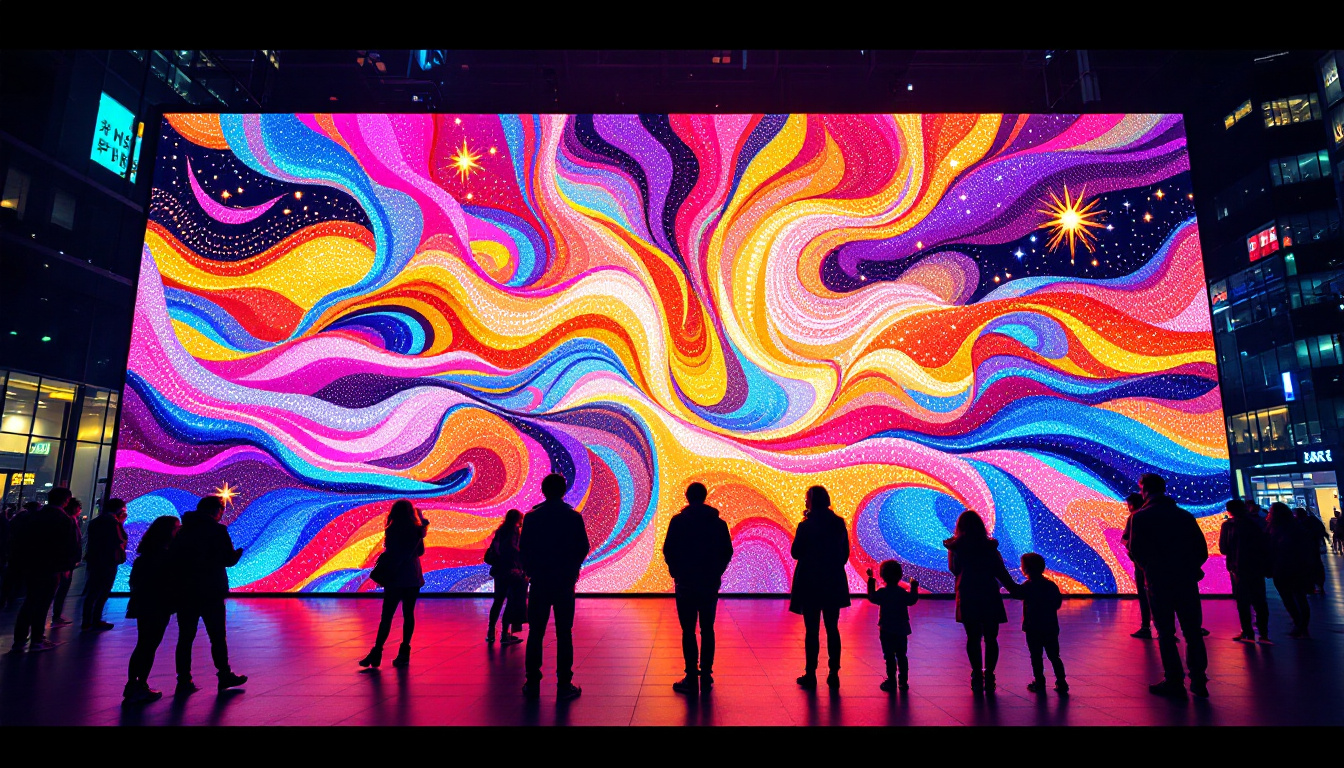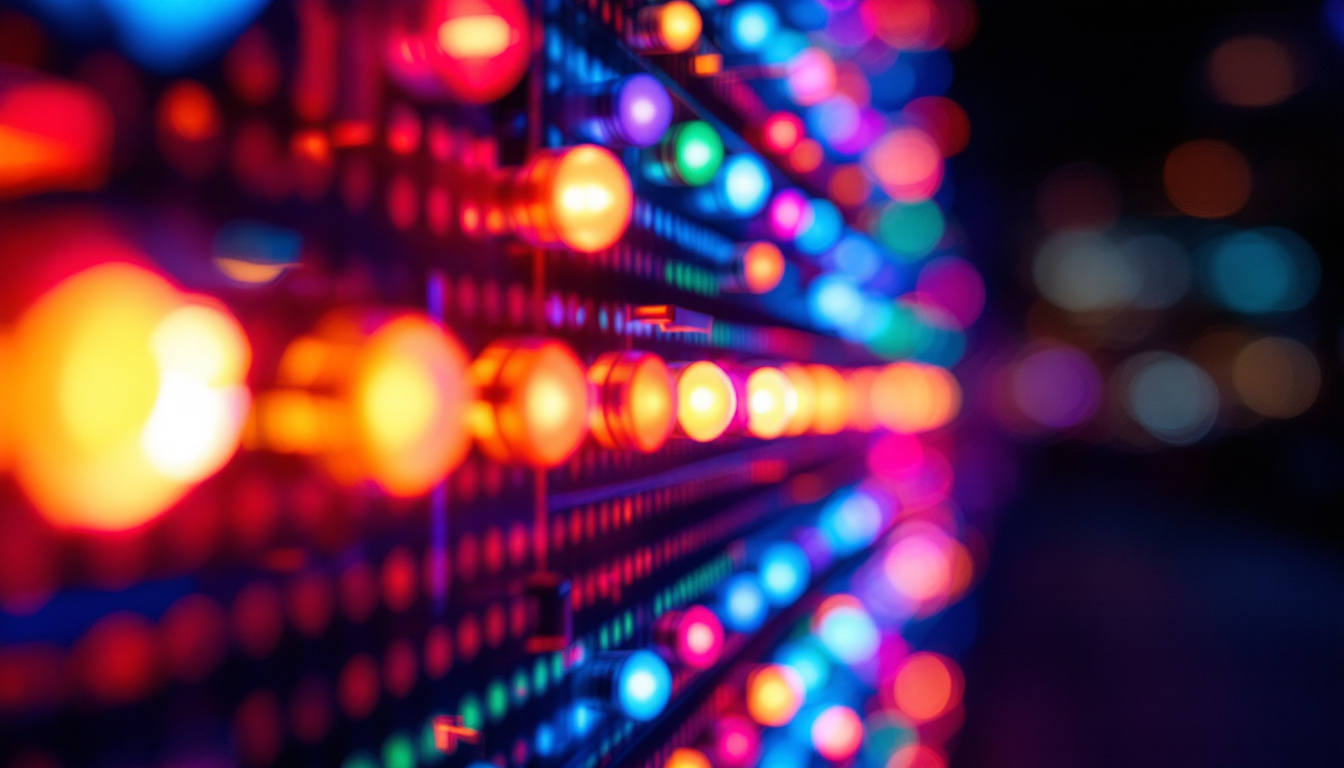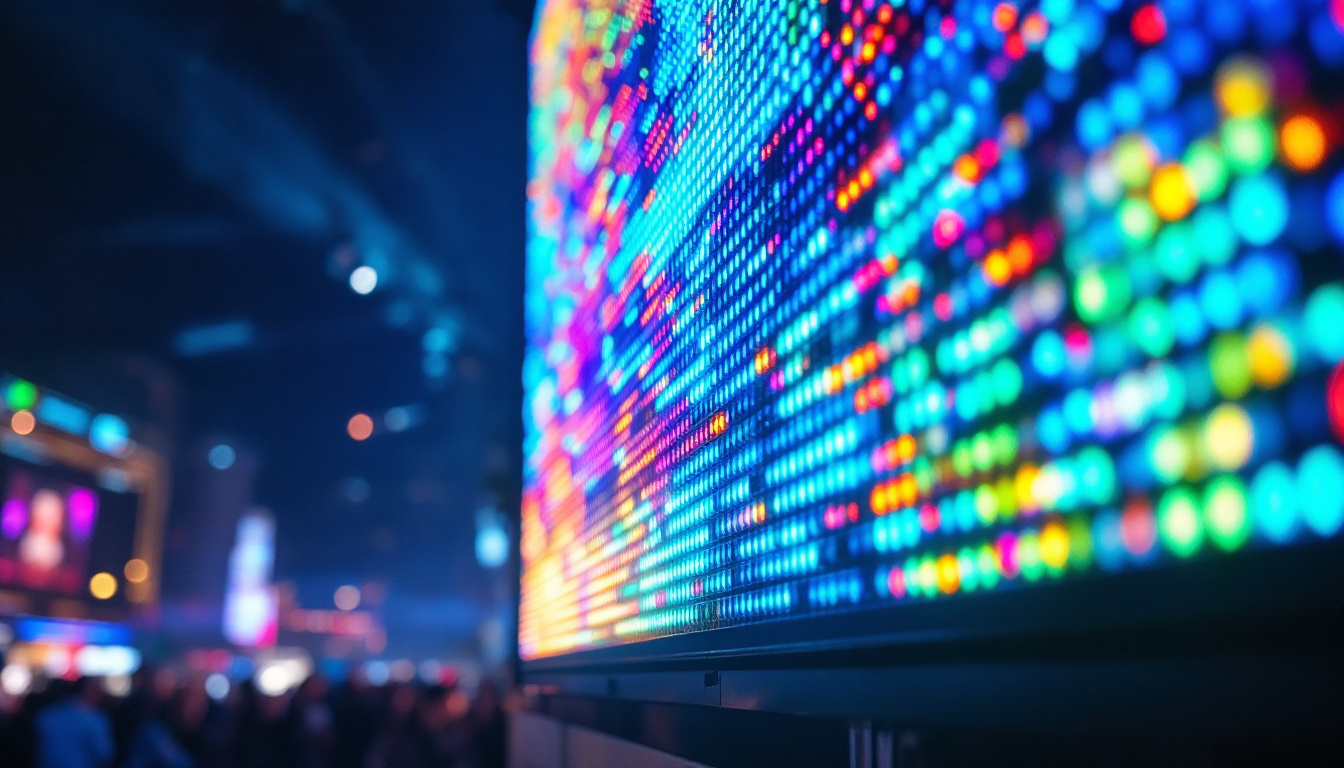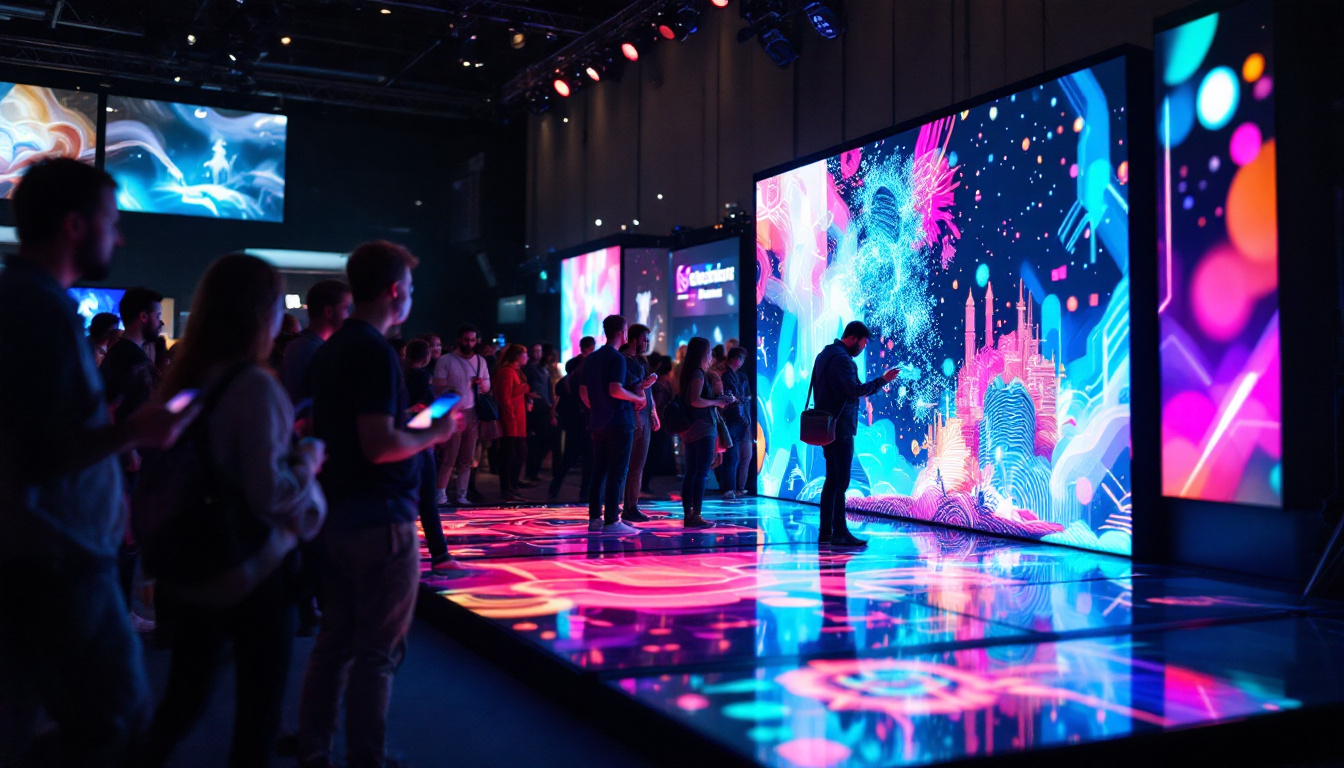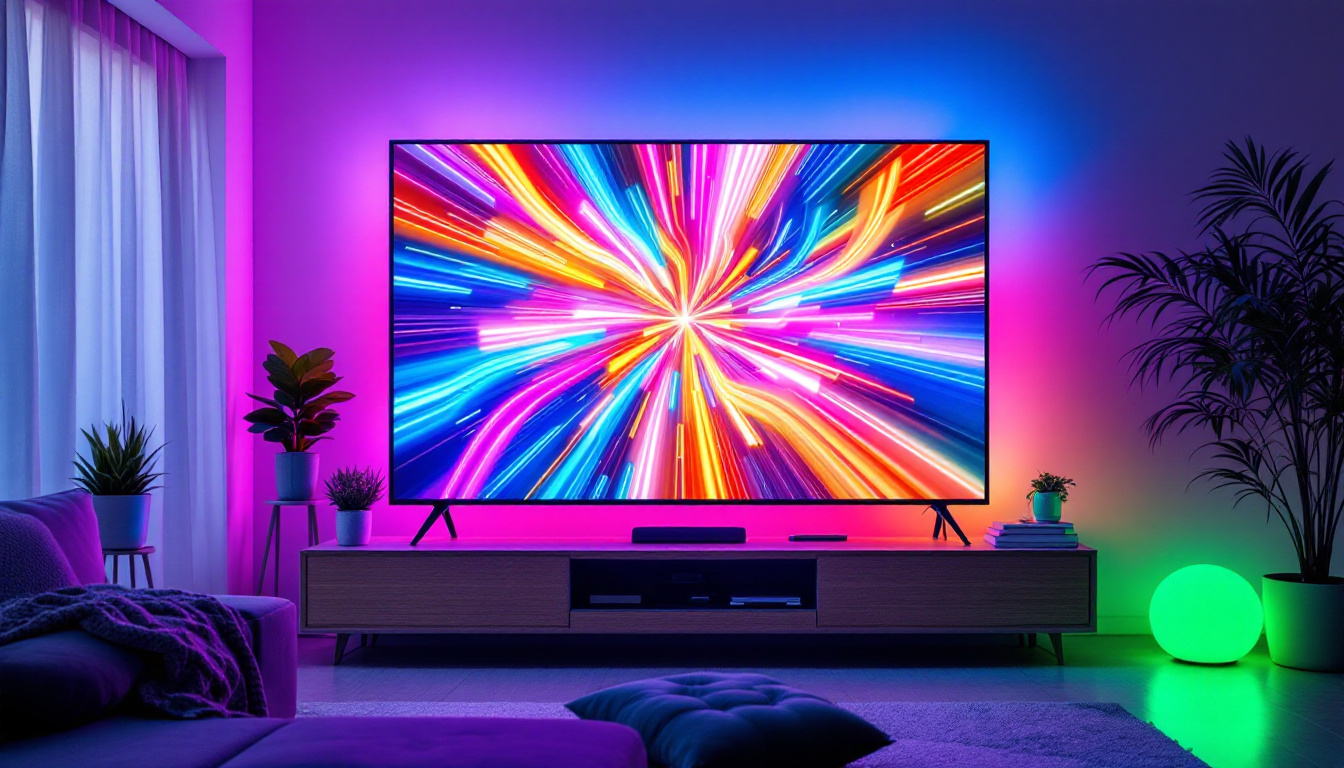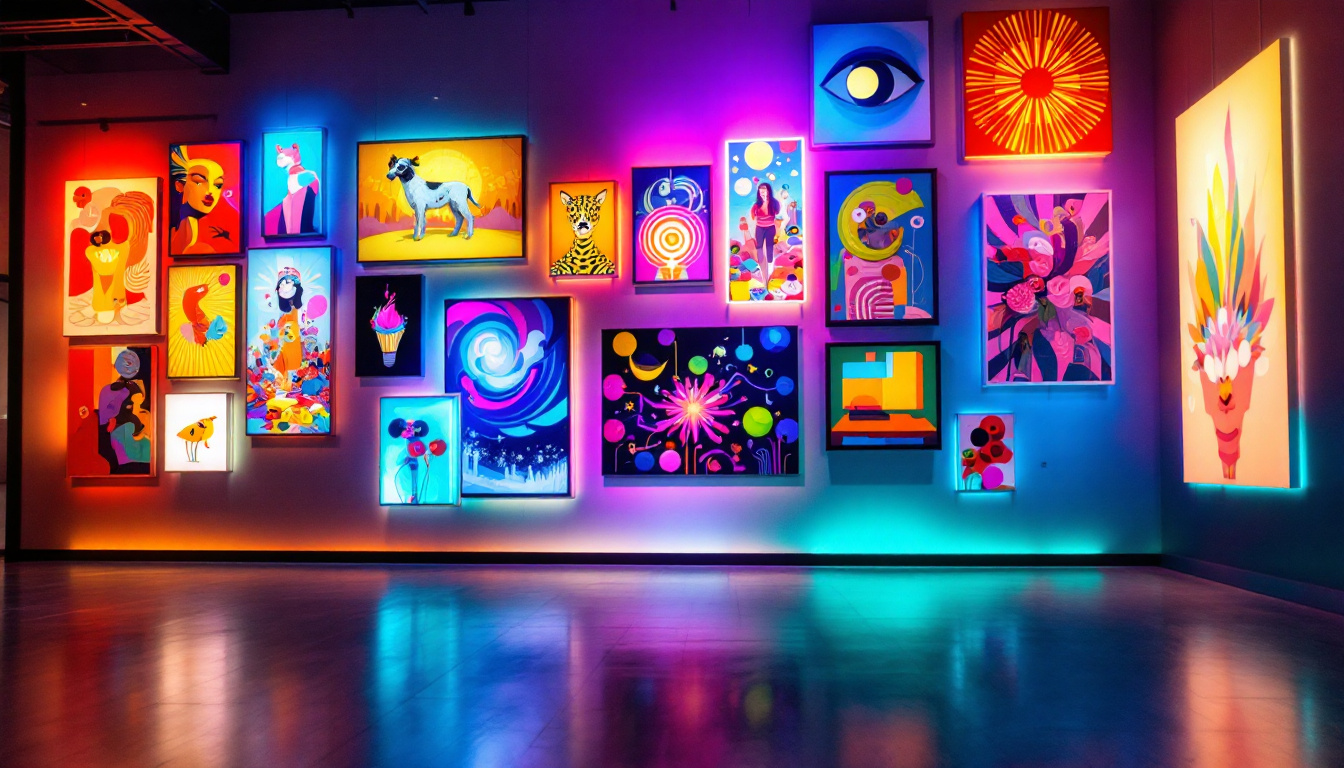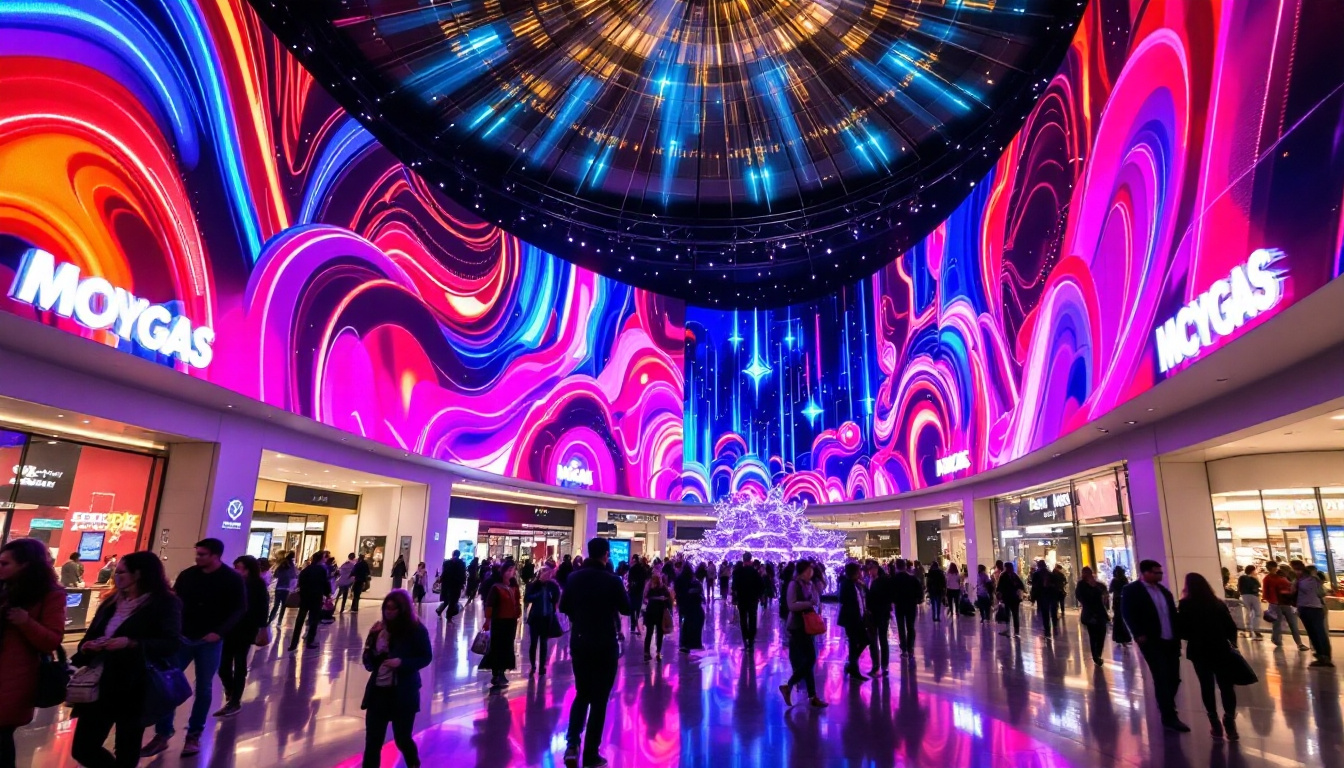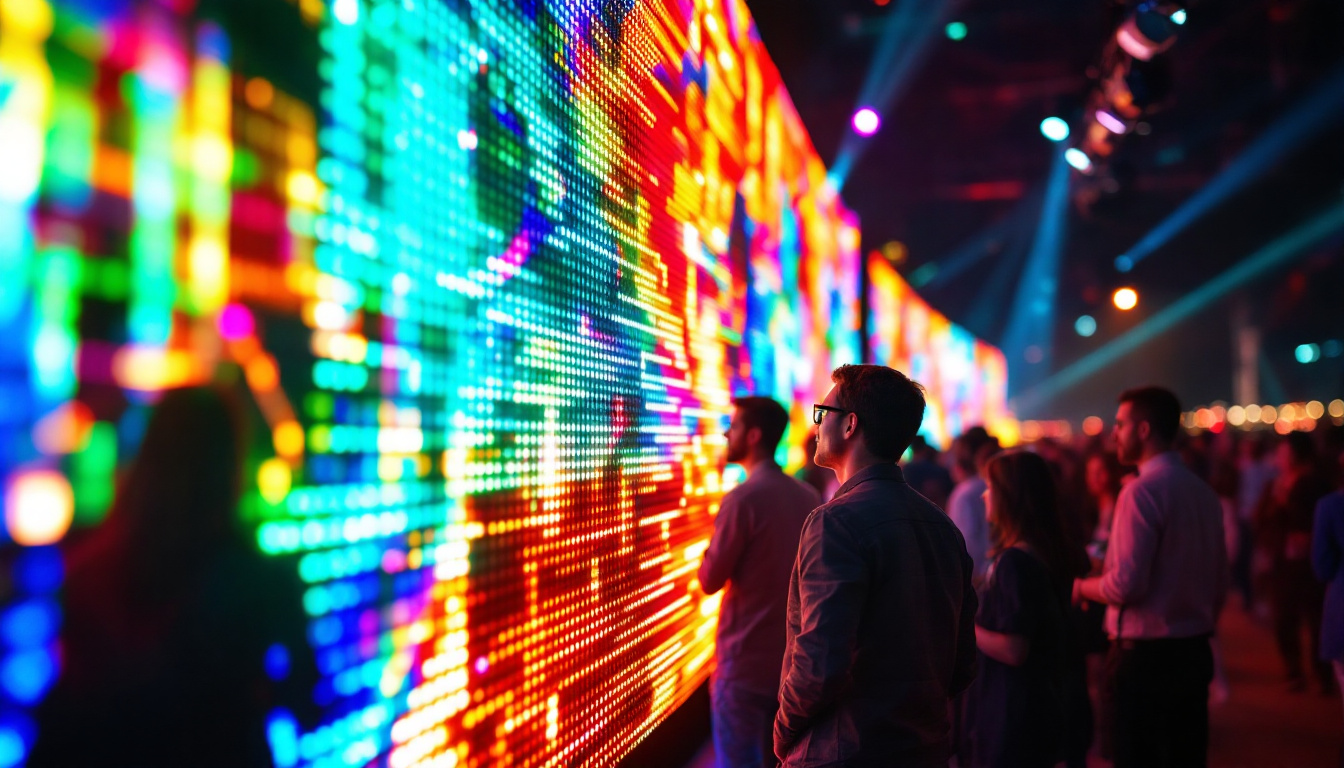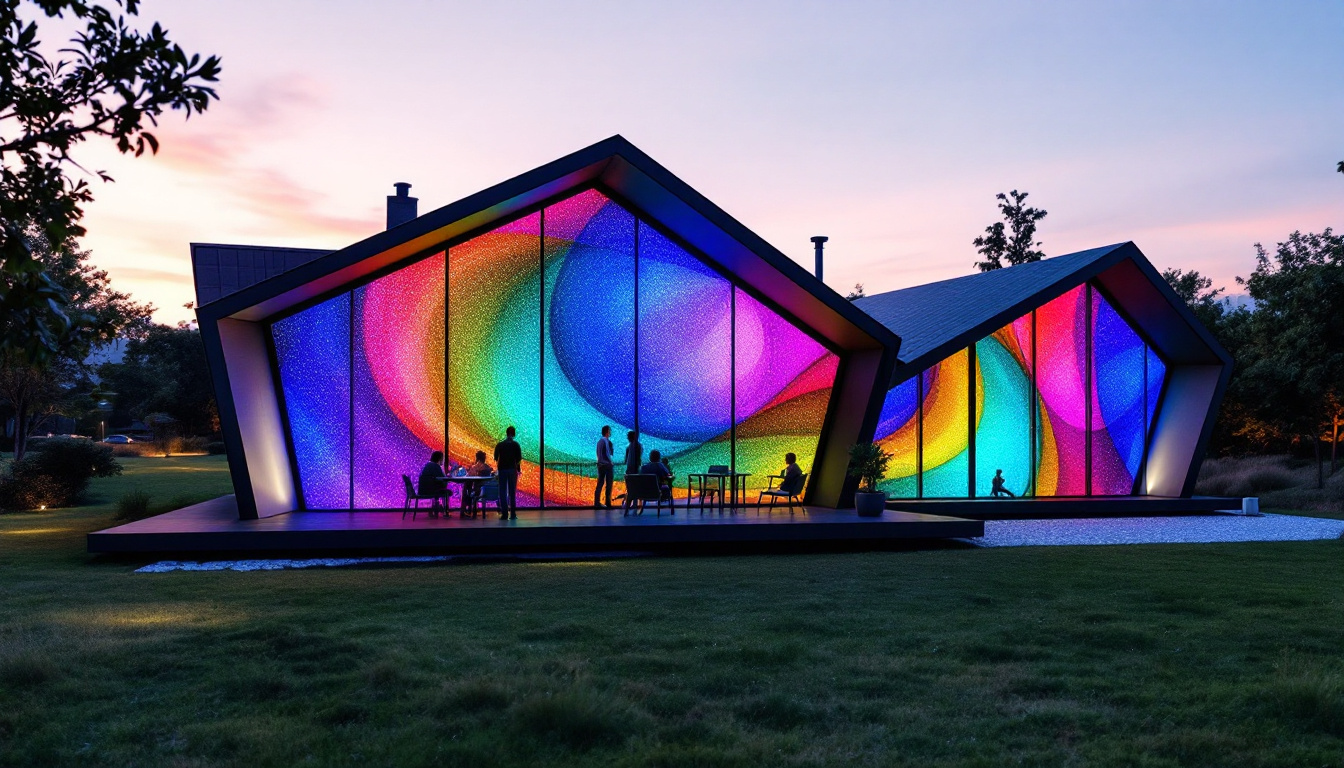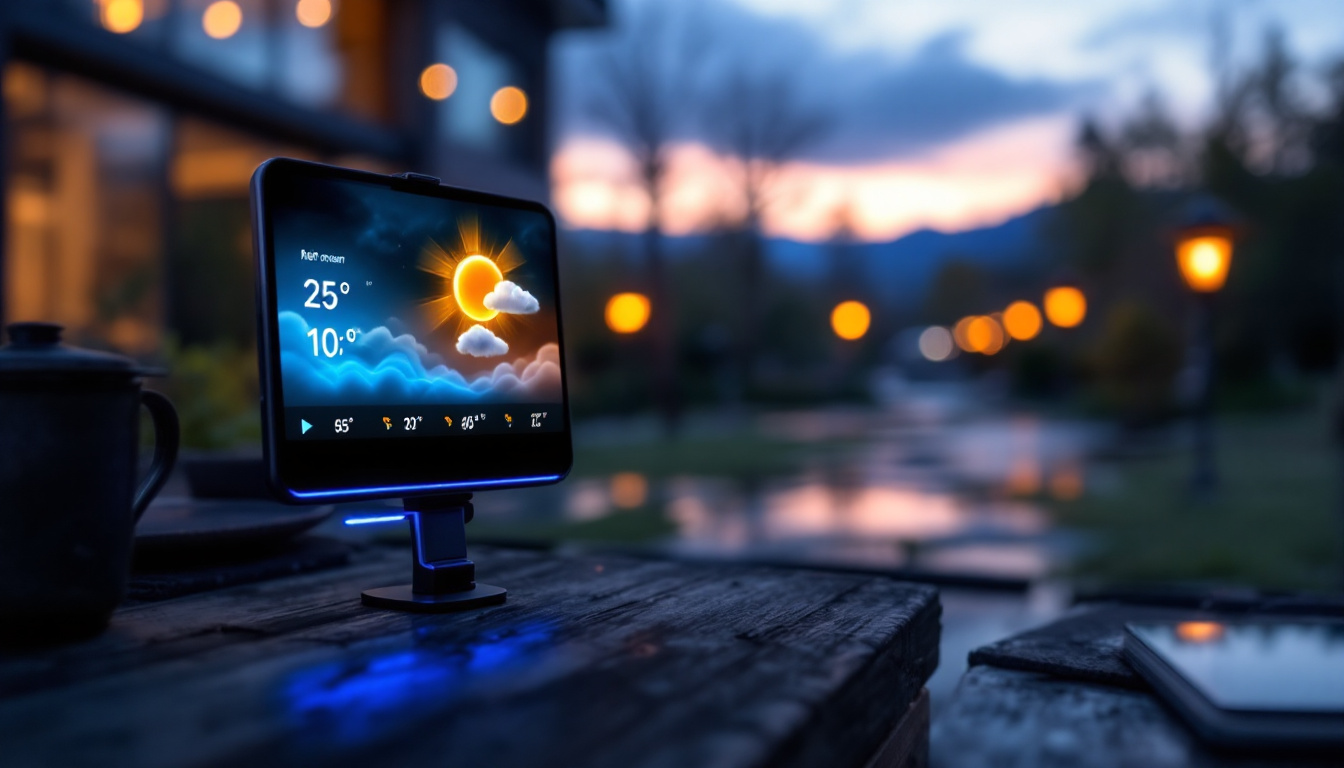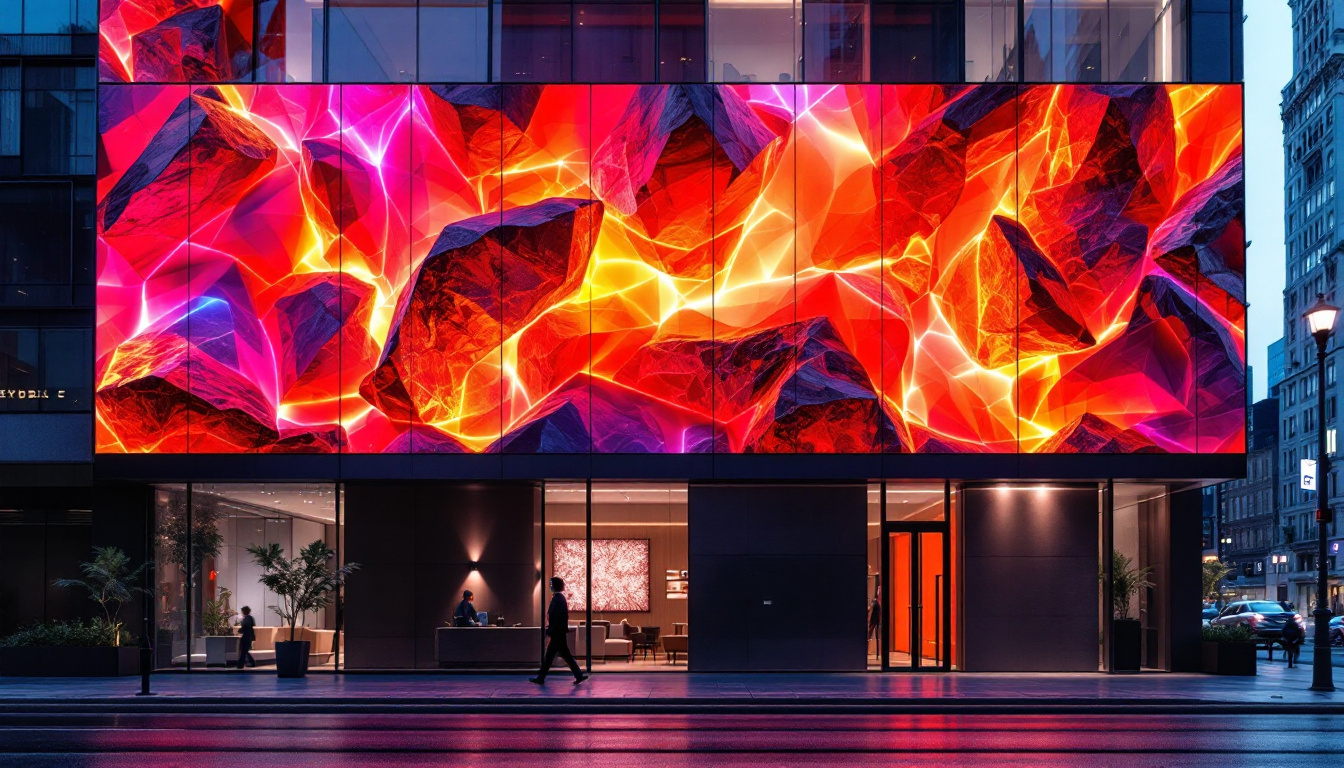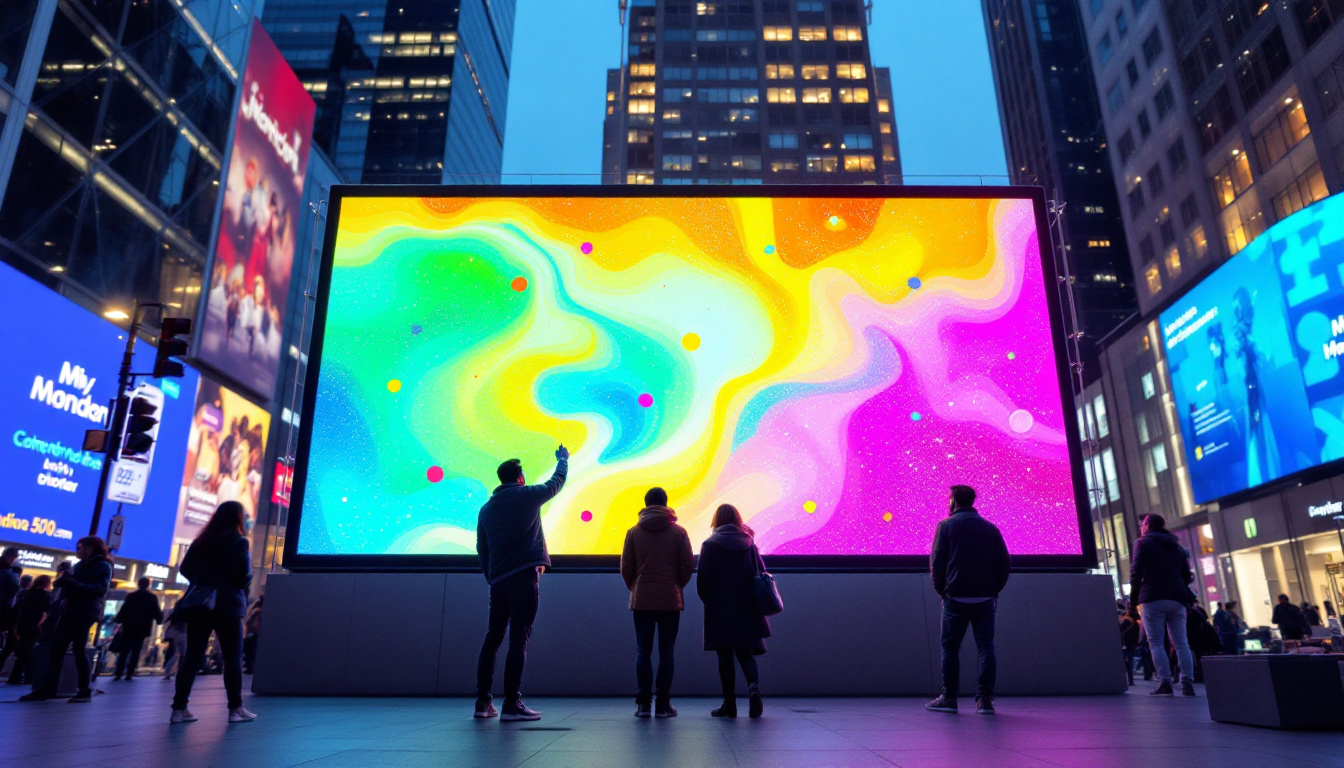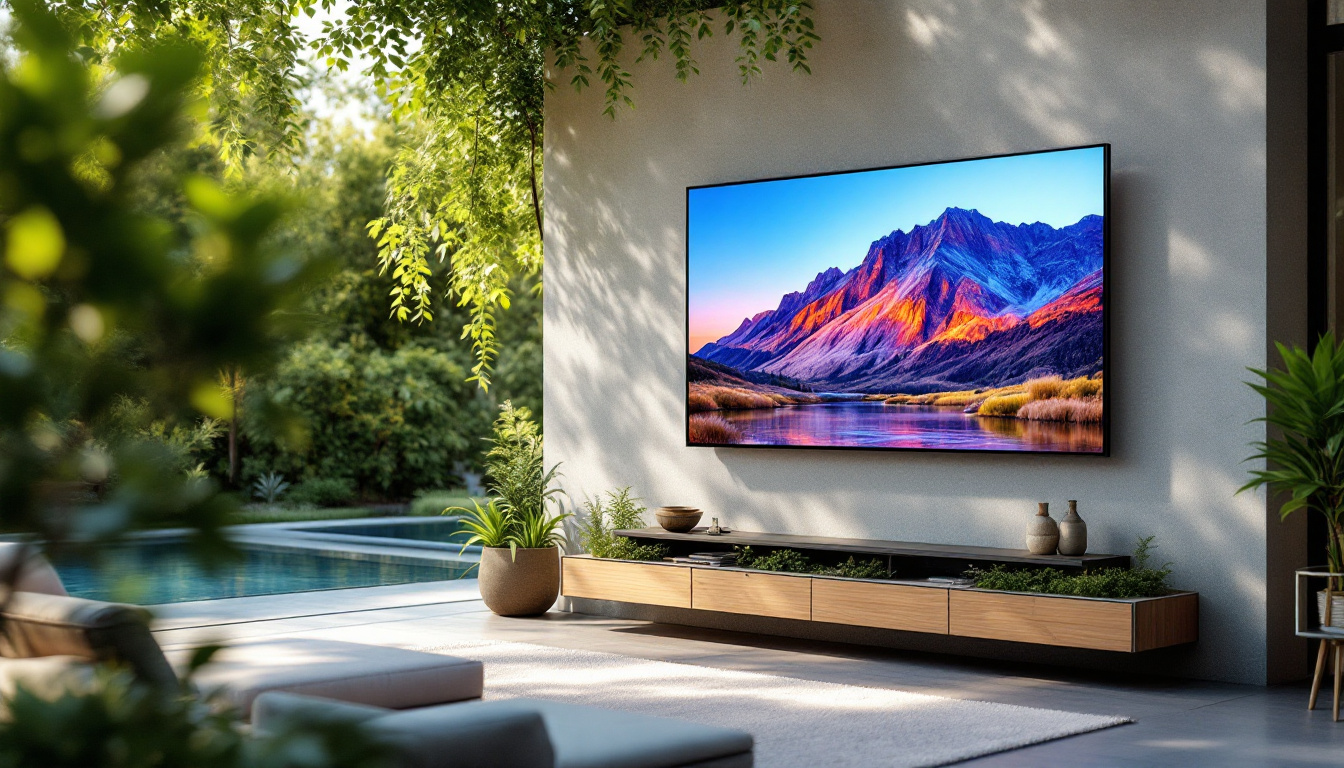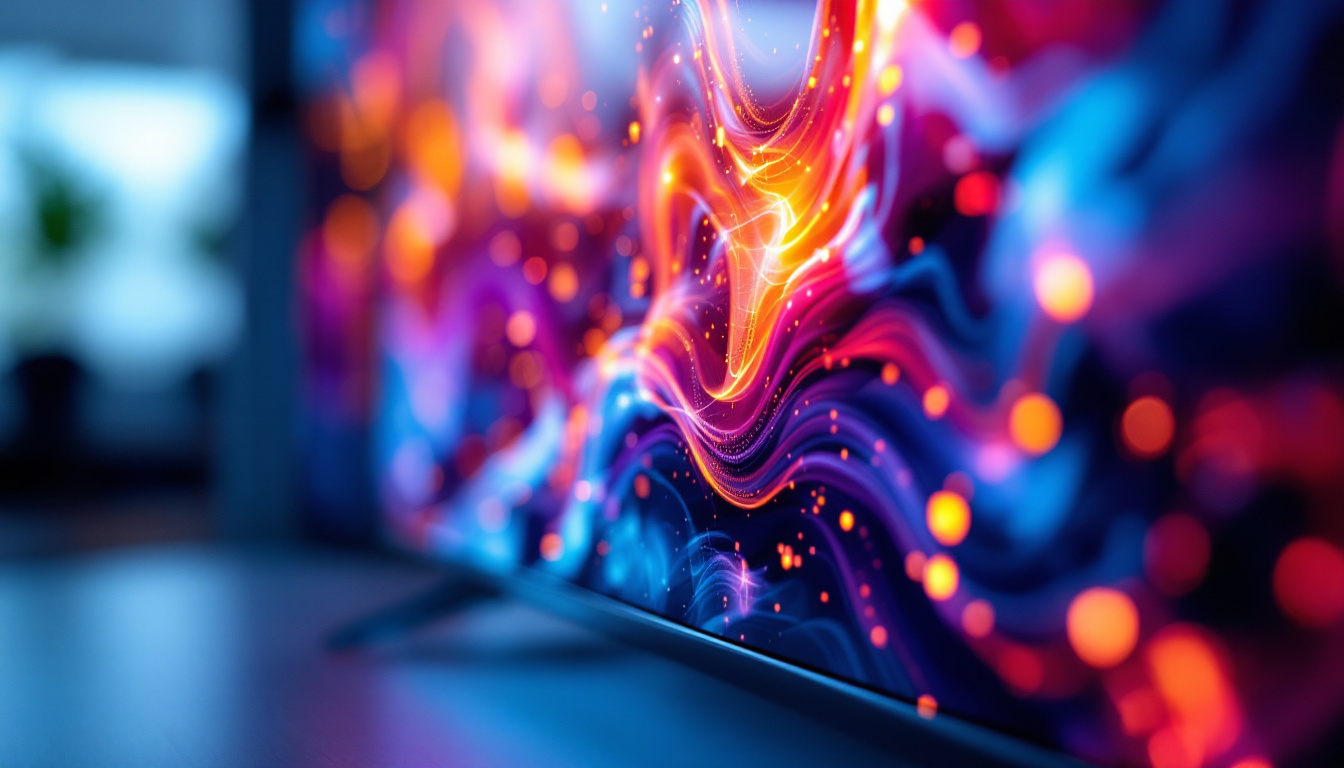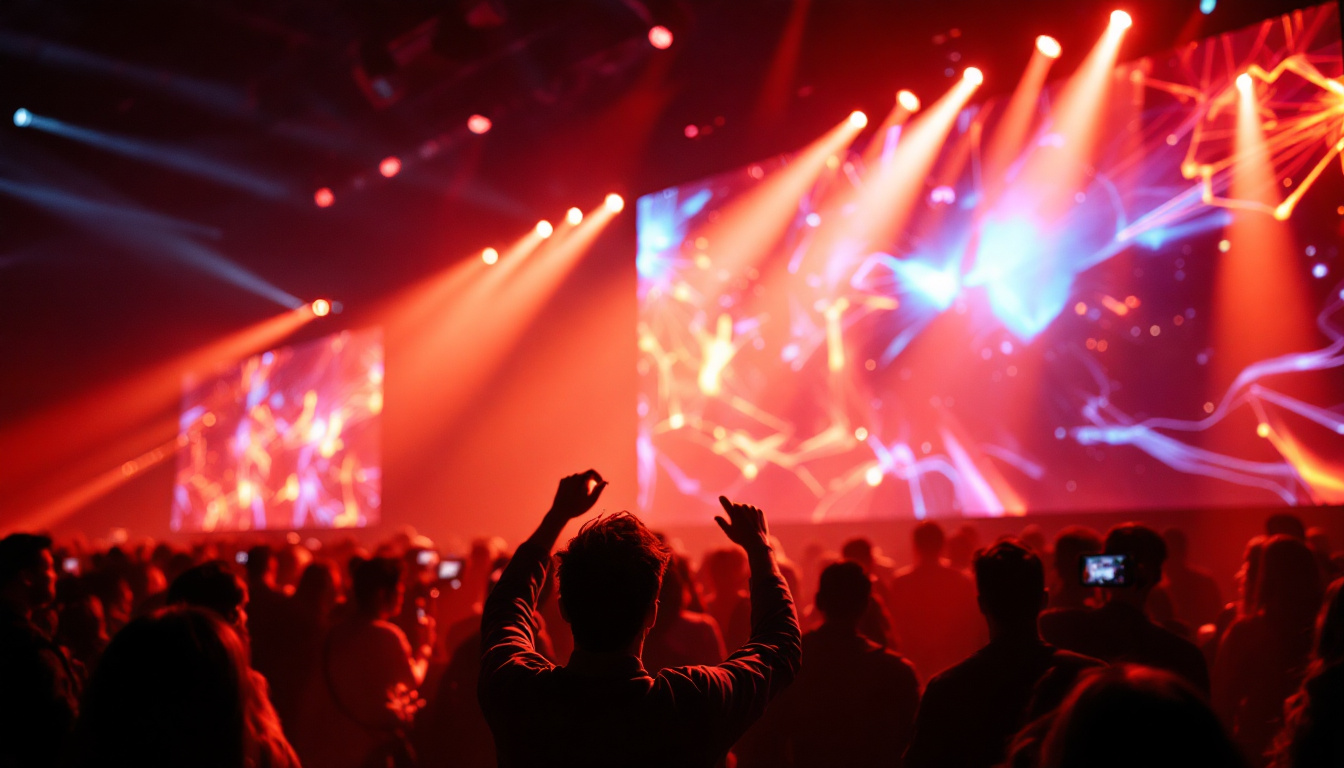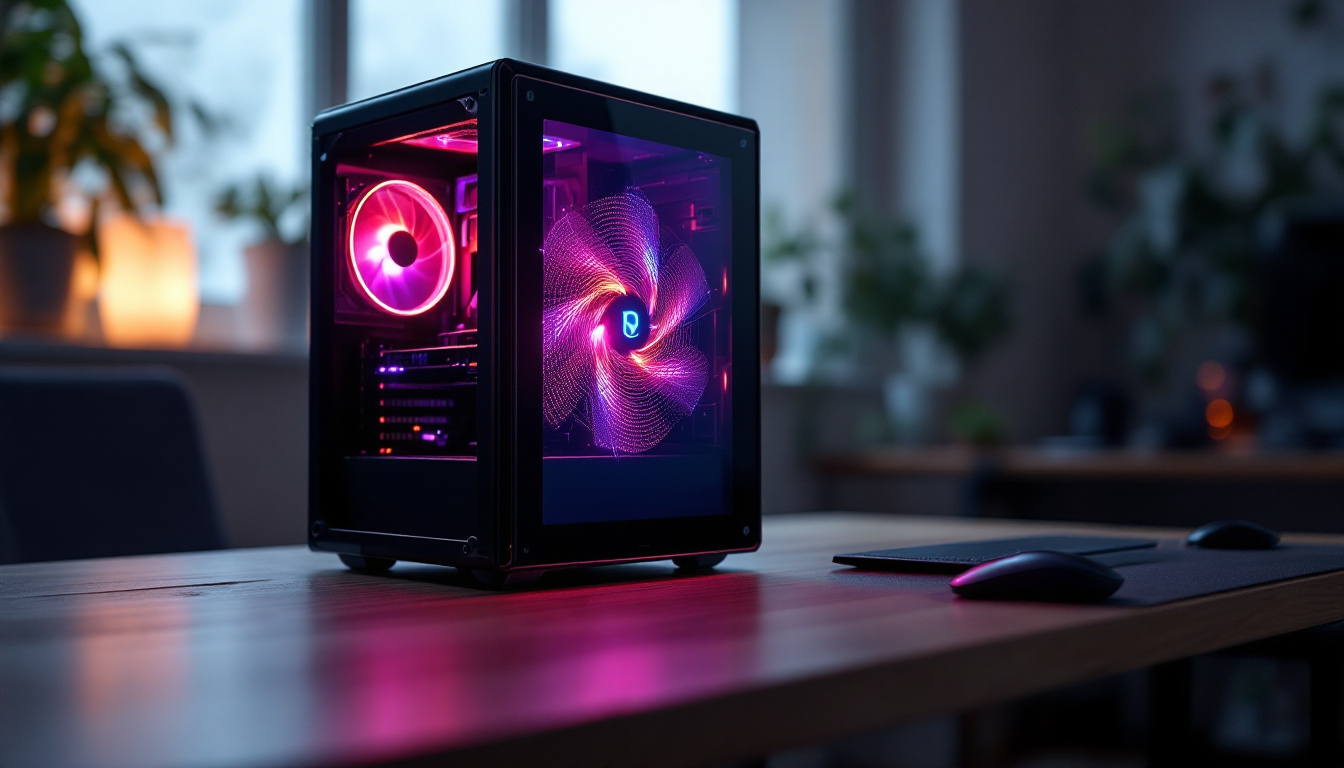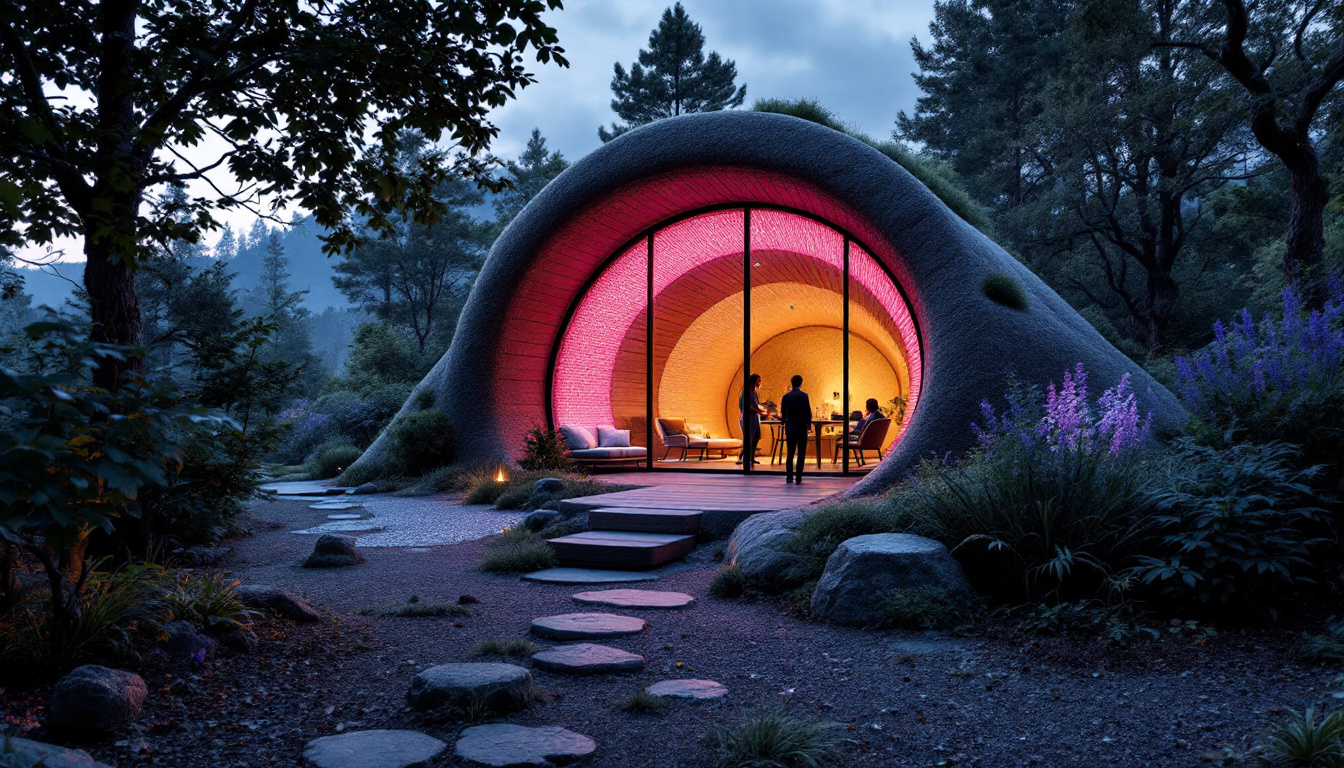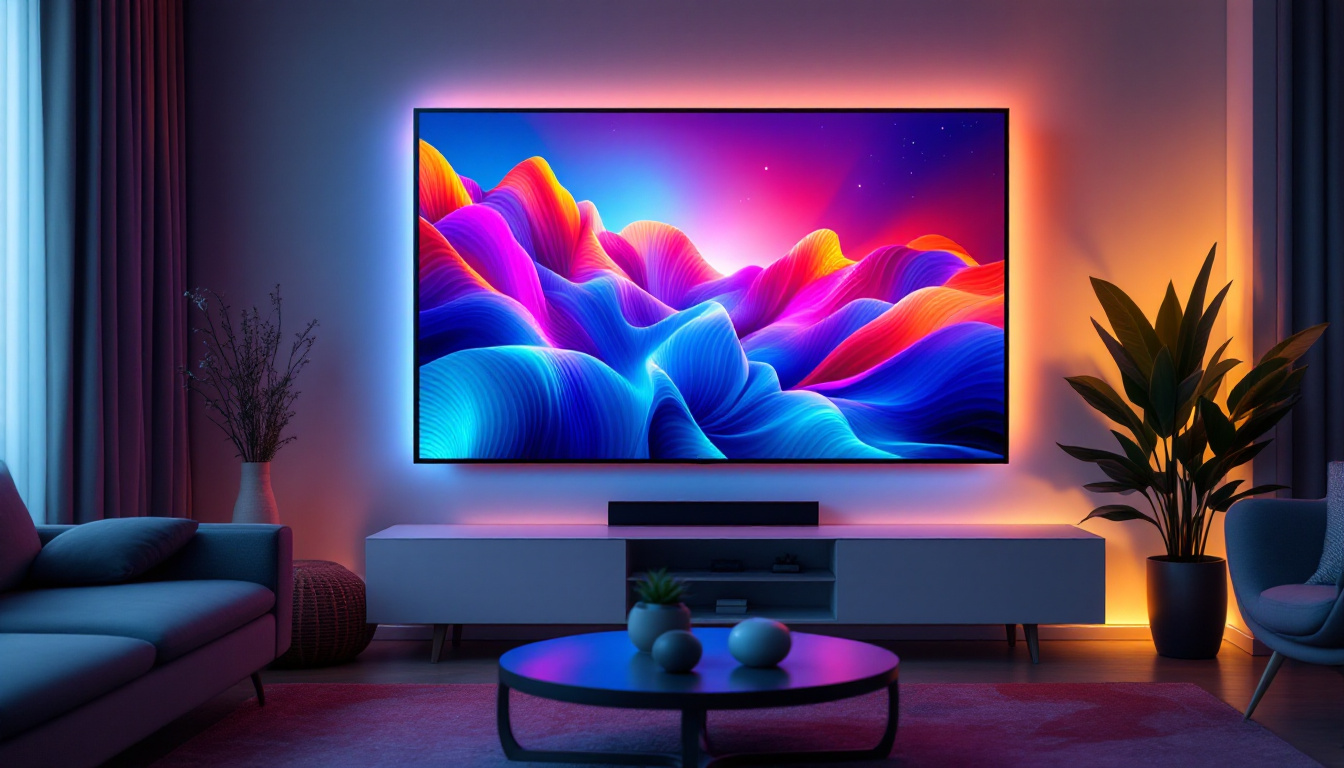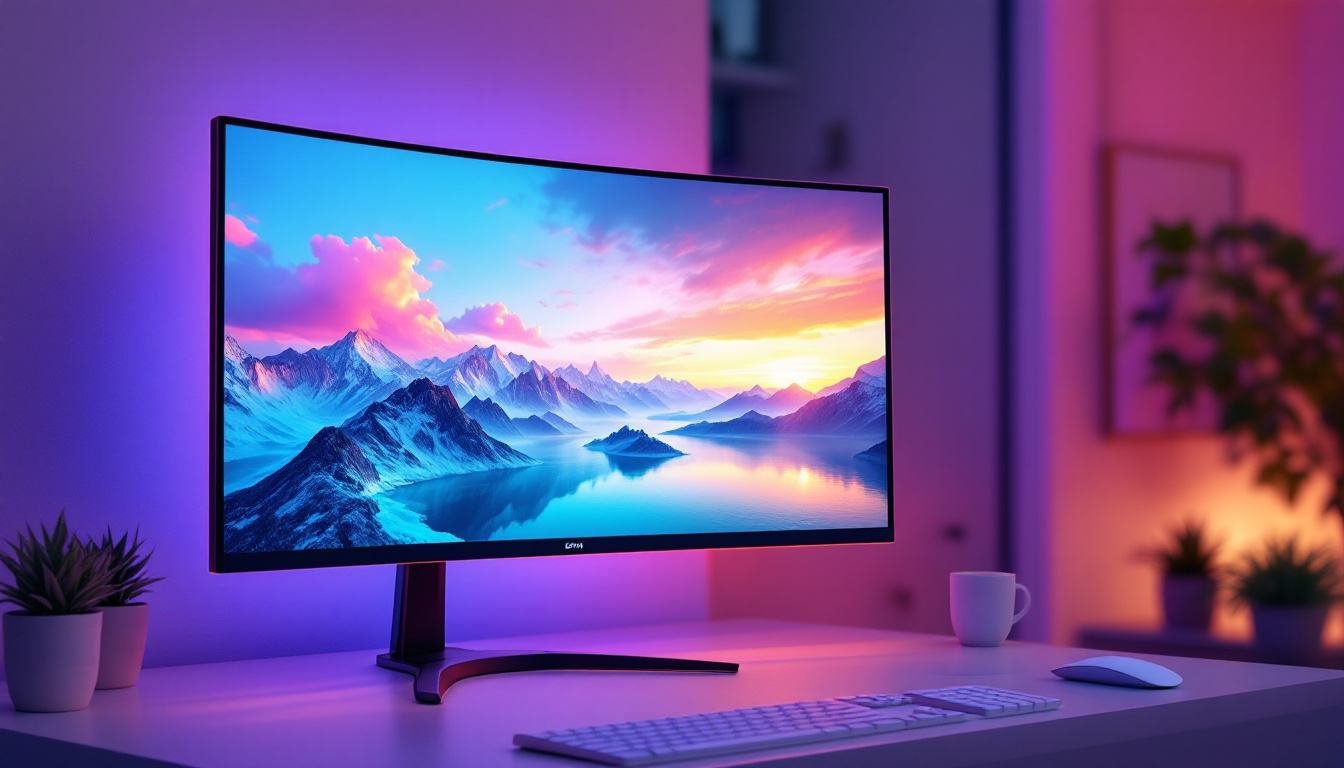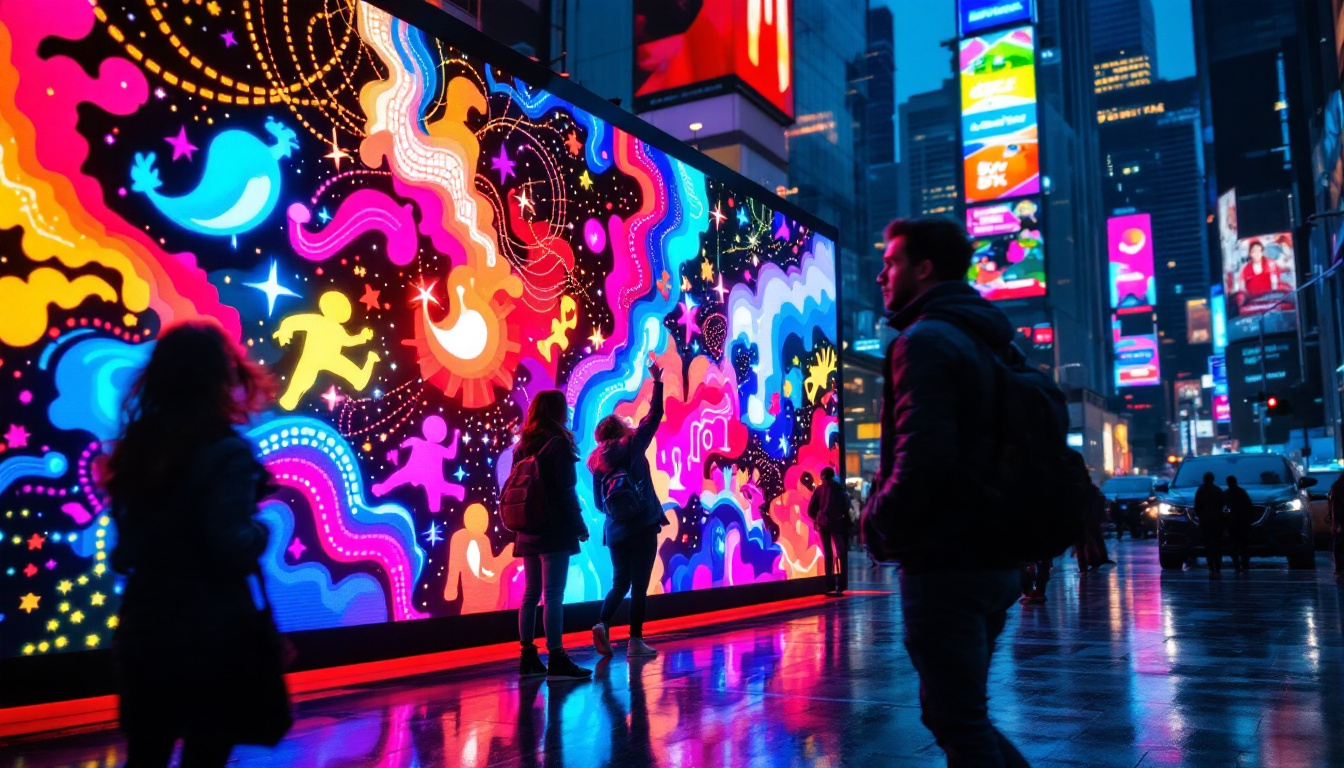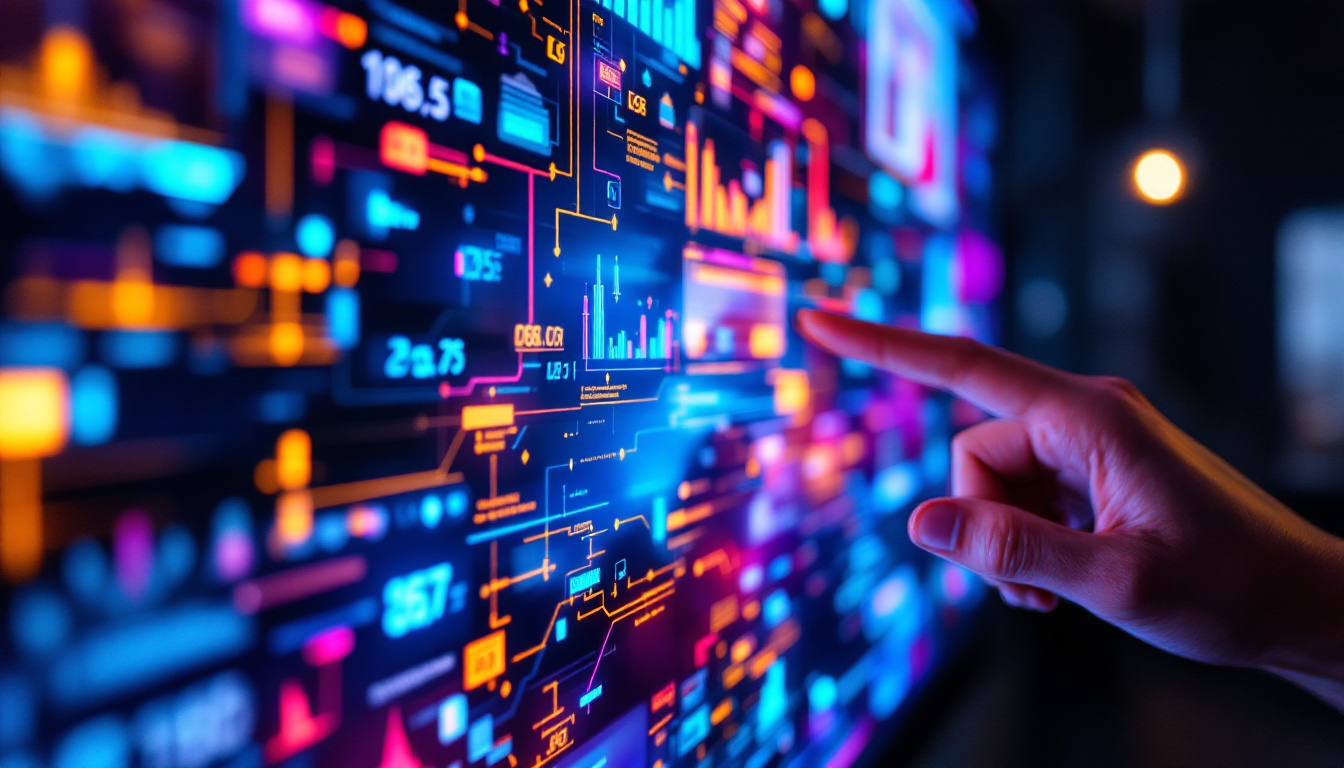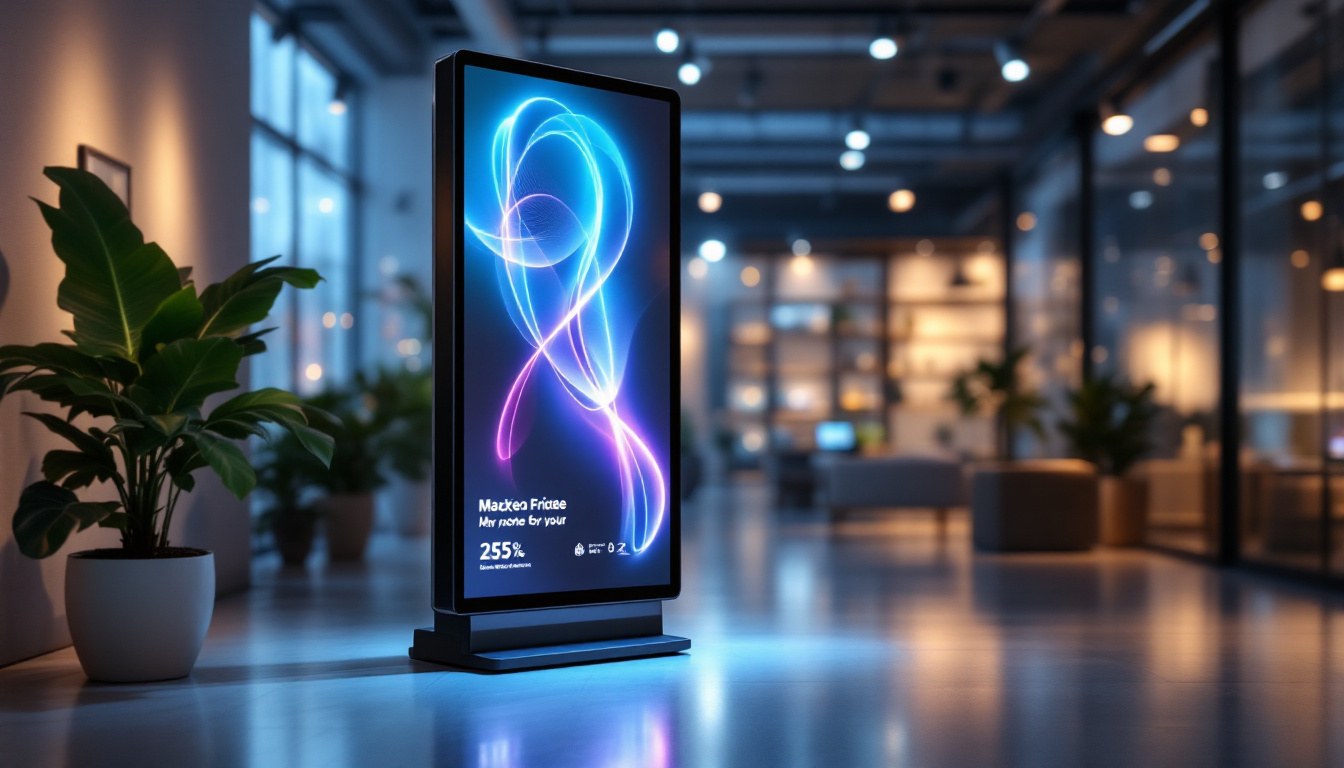The evolution of display technology has transformed the way information is presented and consumed. Among these advancements, LED (Light Emitting Diode) displays have emerged as a prominent choice across various sectors, particularly in the United States. This article delves into the intricacies of LED displays, exploring their functionality, applications, and the reasons behind their growing popularity.
Understanding LED Displays
LED displays are a type of flat panel display that uses light-emitting diodes as pixels for a video display. Unlike traditional LCD screens, which rely on backlighting, LED technology allows for more vibrant colors and deeper blacks. This section will explore how LED displays work and their key components.
How LED Displays Work
At the core of an LED display are tiny semiconductor devices that emit light when an electrical current passes through them. These diodes are arranged in a grid to form pixels, which combine to create images and videos. The brightness and color of each pixel can be adjusted independently, allowing for high contrast and a wide color gamut. This capability is what sets LED displays apart from other technologies.
LED displays can be categorized into two main types: direct-view and backlit. Direct-view LED displays are composed entirely of LEDs, making them ideal for large outdoor screens and signage. Backlit LED displays, on the other hand, utilize LEDs to illuminate an LCD panel, providing a thinner profile suitable for televisions and computer monitors.
Key Components of LED Displays
The primary components of LED displays include the LED array, control system, and power supply. The LED array consists of multiple diodes that create the visual output. The control system manages the signals sent to the LEDs, ensuring accurate color reproduction and synchronization with video content. The power supply is crucial for maintaining consistent brightness and performance.
Additionally, LED displays often feature advanced technologies such as pixel pitch, which refers to the distance between the centers of adjacent pixels. A smaller pixel pitch results in higher resolution and clarity, making it essential for applications that require detailed visuals. This is particularly important in environments like stadiums or concert venues, where the audience may be seated at varying distances from the screen. The closer the viewer is to the display, the more critical it becomes to have a high pixel density to avoid visible pixelation.
Furthermore, LED displays are increasingly being integrated with smart technology, allowing for features such as remote monitoring and control. This capability enables users to adjust settings, update content, and diagnose issues from a distance, enhancing the overall user experience. The incorporation of sensors can also optimize energy consumption by automatically adjusting brightness based on ambient light conditions. As a result, LED displays not only provide stunning visuals but also contribute to energy efficiency and sustainability in various applications.
Applications of LED Displays
LED displays have found applications in various fields, ranging from advertising to entertainment. Their versatility and superior performance make them suitable for a wide range of environments. This section will highlight some of the most common uses of LED displays in the United States.
Advertising and Signage
One of the most prominent uses of LED displays is in advertising. Digital billboards and outdoor signage leverage the brightness and vivid colors of LED technology to capture the attention of passersby. These displays can be programmed to show dynamic content, allowing advertisers to change messages quickly and efficiently.
In urban areas, LED displays are increasingly used for public information systems, such as transit schedules and event announcements. Their ability to convey information in real-time enhances communication and engagement with the public.
Entertainment and Events
LED displays play a crucial role in the entertainment industry, particularly in concerts, sporting events, and festivals. Large-scale LED screens are often set up to provide audiences with an immersive experience, displaying live feeds, graphics, and animations that enhance the overall atmosphere.
Moreover, the flexibility of LED technology allows for creative installations, such as LED walls that can be shaped and configured to fit various venues. This adaptability makes them a popular choice for event organizers looking to create visually striking experiences.
Corporate and Educational Use
In corporate settings, LED displays are utilized for presentations, meetings, and training sessions. Their clarity and brightness ensure that information is conveyed effectively, even in large conference rooms. Additionally, many educational institutions are adopting LED displays for classrooms and auditoriums, enhancing the learning experience with engaging visual content.
The interactive capabilities of some LED displays also facilitate collaboration and participation, allowing users to engage with the content in real-time. This interactivity can transform traditional teaching methods and improve information retention among students.
Advantages of LED Displays
The growing adoption of LED displays can be attributed to several advantages they offer over traditional display technologies. Understanding these benefits can provide insight into why they have become a preferred choice in various applications.
Energy Efficiency
One of the most significant advantages of LED displays is their energy efficiency. Compared to conventional lighting technologies, LEDs consume significantly less power, which translates to lower operating costs. This energy efficiency is particularly beneficial for large-scale installations, where electricity consumption can be substantial.
Additionally, the longevity of LED technology means that these displays require less frequent replacements, further reducing costs and waste. With a lifespan that can exceed 50,000 hours, LED displays are a sustainable choice for businesses and organizations.
Superior Image Quality
LED displays are known for their exceptional image quality, characterized by high brightness, contrast ratios, and color accuracy. This quality ensures that content is displayed vividly, even in bright outdoor environments. The ability to achieve deep blacks and vibrant colors enhances the viewing experience, making LED displays ideal for various applications.
Furthermore, advancements in LED technology, such as HDR (High Dynamic Range) and 4K resolution, have elevated the standard for image quality, making them suitable for high-end applications in entertainment and media.
Durability and Reliability
LED displays are designed to withstand various environmental conditions, making them highly durable and reliable. Unlike traditional displays, which may be susceptible to damage from impacts or extreme weather, LED technology is robust and can operate effectively in diverse settings.
This durability is particularly important for outdoor applications, where displays are exposed to the elements. Many LED displays are also equipped with protective features, such as weatherproofing and anti-glare coatings, ensuring optimal performance in challenging conditions.
Challenges and Considerations
Despite their numerous advantages, LED displays are not without challenges. Understanding these considerations is essential for making informed decisions when selecting and implementing LED technology.
Initial Costs
One of the primary challenges associated with LED displays is their initial cost. While prices have decreased over the years, high-quality LED displays can still represent a significant investment, especially for large installations. Organizations must weigh the upfront costs against the long-term savings in energy and maintenance to determine the overall value.
However, financing options and leasing arrangements are often available, making it easier for businesses to adopt LED technology without straining their budgets. Additionally, the potential for increased revenue through enhanced advertising and customer engagement can offset initial expenditures.
Technical Expertise
Implementing LED displays often requires a certain level of technical expertise, particularly for installation and maintenance. Organizations may need to invest in training or hire specialized personnel to ensure that the displays are set up and operated correctly.
Furthermore, as technology continues to evolve, staying updated on the latest advancements and best practices is crucial for maximizing the benefits of LED displays. This ongoing education can be a challenge for some organizations, particularly smaller businesses with limited resources.
Environmental Impact
While LED displays are generally considered more environmentally friendly than traditional technologies, they are not without environmental concerns. The production and disposal of electronic components can contribute to electronic waste, and improper disposal can lead to hazardous materials entering the environment.
To mitigate these issues, it is essential for organizations to adopt responsible practices, such as recycling old displays and choosing manufacturers that prioritize sustainability in their production processes. By doing so, the environmental impact of LED displays can be minimized.
The Future of LED Displays
As technology continues to advance, the future of LED displays looks promising. Innovations in design, functionality, and integration with other technologies are expected to shape the landscape of display technology in the coming years.
Emerging Technologies
Recent developments in LED technology, such as microLED and OLED (Organic Light Emitting Diode), are pushing the boundaries of what is possible. MicroLED displays offer even higher resolution and efficiency, while OLED technology provides enhanced color accuracy and flexibility in design.
These emerging technologies are likely to open new avenues for applications in various sectors, including healthcare, automotive, and virtual reality. As these technologies mature, they will likely complement existing LED solutions, providing users with even more options for display solutions.
Integration with Smart Technologies
The integration of LED displays with smart technologies, such as IoT (Internet of Things) and AI (Artificial Intelligence), is also on the rise. Smart LED displays can collect and analyze data to optimize content delivery and enhance user engagement.
This integration allows for personalized experiences, where content can be tailored to specific audiences based on real-time data. As businesses increasingly seek to connect with consumers on a deeper level, smart LED displays will play a crucial role in achieving this goal.
Conclusion
LED displays have revolutionized the way information is communicated and experienced across various sectors in the United States. Their energy efficiency, superior image quality, and durability make them a compelling choice for advertising, entertainment, corporate, and educational applications.
While challenges such as initial costs and technical expertise exist, the long-term benefits and ongoing advancements in technology position LED displays as a critical component of modern communication strategies. As the industry continues to evolve, embracing LED technology will be essential for organizations looking to stay ahead in a competitive landscape.
In summary, understanding the intricacies of LED displays and their applications can empower businesses and individuals to make informed decisions that enhance their communication efforts and drive engagement in an increasingly visual world.
Discover LumenMatrix’s Innovative LED Display Solutions
As you consider the transformative impact of LED displays on communication and engagement, take the next step with LumenMatrix. Our commitment to innovation in LED display technology ensures that your message is not just seen, but truly experienced. From the vibrant visuals of our Indoor and Outdoor LED Wall Displays to the dynamic versatility of our Vehicle, Sports, and Floor LED Displays, LumenMatrix offers a comprehensive range of solutions tailored to your needs. Elevate your visual presence with our Custom, All-in-One, and LED Transparent Displays, designed to captivate and engage your audience. Check out LumenMatrix LED Display Solutions today and join the revolution in visual communication.

